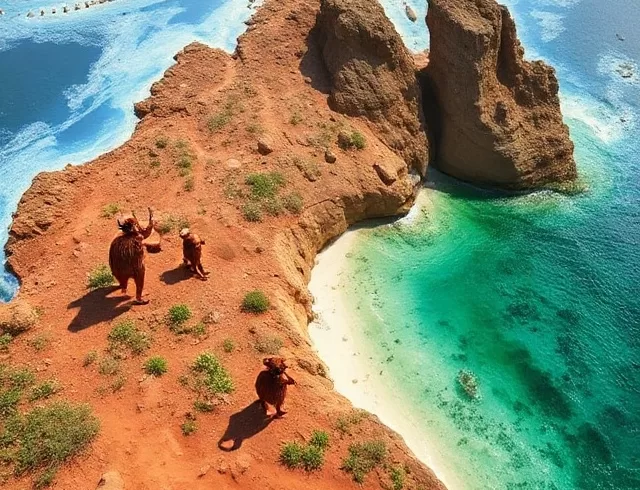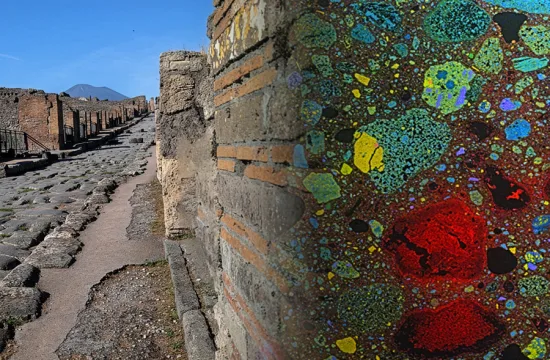|
Getting your Trinity Audio player ready...
|
New study by Utah anthropologist used genetic studies to conclude that Sahul colonizers arrived later than the commonly held 65,000-year timeframe

Aboriginal Australian culture is regarded as one of humanity’s oldest continuous living cultures. The existing scientific literature estimates their arrival on the continent of Australia at 65,000 years ago as a group known as the Sahul peoples.
However, recent genetics research led by the University of Utah that analyzes traces of Neanderthal DNA in Homo sapiens suggests the actual origination date was no more than 50,000 years ago.
In collaboration with a colleague from Australia’s La Trobe University, James O’Connell, Distinguished Professor Emeritus in the Department of Anthropology, reported new findings in a study in the journal Archaeology in Oceania.
The team highlights conclusions from previous studies that argue Homo sapiens and Neanderthals interbred only once, over a period of several thousand years—between 43,500 and 51,500 before present, or BP. Most modern humans, including Indigenous Australians, carry 1–4% Neanderthal DNA. The logic follows that modern Aborigine ancestors’ arrival on the continent could not have predated this time range.
Moreover, the dating of most archaeological sites across Australia points to a range between 43,000 and 54,000 years. “The colonization date falls within that interval,” O’Connell said. “That puts it in the same time range as the beginning of the displacement of Neanderthal populations in western Eurasia by anatomically modern humans.”
Other hominids, such as Homo erectus, had lived in Southeast Asia for more than a million years, but had not crossed overseas in large enough numbers to create a stable population in Australia. That is an important measure of the significance of Homo sapiens’ arrival.
Dating archaeological sites using OSL
One important Australian outlier among archaeological sites, O’Connell notes, is Madjedbebe, a site dated within a range of 59,000 to 70,000 years ago. The dating technique used in a 2017 study of Madjedbebe published in Nature was optically stimulated luminescence, or OSL. The technique reads minerals, typically quartz or feldspar, recovered at the site like a “clock” by measuring the energy they store. Radiation accumulates when these minerals are buried, then released when they are exposed to light. Measurements of the amount released determine when the minerals were last exposed to light.
The site has been subject to sand deposition, which may explain the estimated age of the artifacts. “The question for us has not been about the validity of the date. It’s about the relationship between the date and material evidence of human presence—that is, artifacts. In that part of Australia, many older archaeological sites are in situations where the depositional environment is a sand sheet. Material can move down through those deposits over time.”
Artifacts that are heavier than sand could settle through the sand deposit over time, and as a result, the dating process may have accurately analyzed the age of the sand deposits but not the artifacts they come to contain.
O’Connell also reviewed the hurdles the first Sahul peoples to arrive in Australia would have faced. The Sahul likely relied on rafts or canoes for exploration from Southeast Asia and colonization of Australia.
But several challenges existed: first, they would need to engineer marine-capable watercraft that could pass through a “formidable ecological barrier,” the Wallacean archipelago, spanning 1,500 kilometers. Island-hopping through the archipelago, now comprising the nation of Indonesia, to Australia would involve at least eight separate crossings, the longest being 90 kilometers.
Early colonizers arrived in at least four groups
Moreover, these journeys would need to support a sizable population. Citing mitochondrial data, O’Connell noted, “Genomic analysis shows that early human colonizing populations included at least four separate mitochondrial lineages. Simple modeling exercises show that establishing each lineage on Sahul required the presence of at least five–10 women of reproductive age, which implies census populations of at least 25–50 individuals per lineage among the founders.”
The analysis indicates that these founding populations arrived within a short timeframe, lasting just a few centuries.
“This strongly suggests that colonizing passage was deliberate, not accidental,” O’Connell said, “and that it required sturdy rafts or canoes capable of holding, say, 10 or more people each plus the food and water needed to sustain those folks on open ocean voyages of up to several days, and of making headway against occasionally contrary ocean currents.”
Altogether, this technological progression adds more weight to a post-50,000-year arrival date, with other innovations and behavioral shifts—including cave art, tools, and ornaments—emerging in that timeframe.
The 50,000-year hypothesis has been a focus of the Australian anthropological debate since 2018. Four separate genetics studies have outlined the DNA ancestries of modern Indigenous New Guineans and Australians, concluding they could not have arrived earlier than 55,000 years ago. The other side of the debate continues to favor a 65,000-year date, which O’Connell disputes.
“I would expect in the next five years or so, the pendulum is going to swing back to general agreement for an under 50,000-year date for Australian colonization. It links up with the broader Eurasian record of an out-of-Africa population wave that spreads across Eurasia—a process that occurs over several thousand years. That raises all kinds of questions about why it happens, what it involves, what prompts it, and what changes in behavior are indicated in greater detail than they are now.”







